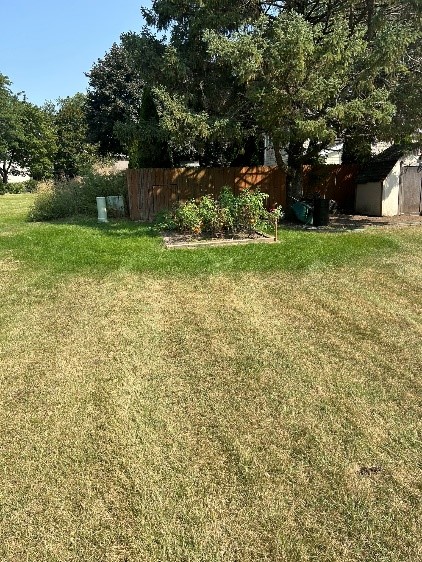Your Cart

Turf Talk With Dr. Brad
Oct 15, 2024
Turf Talk With Dr. Brad
The Importance of Water
Dihydrogen monoxide; not necessarily an essential nutrient, it is very essential for the growth ![]() and health of our lawns. Then again, not just for lawns, but human health as well. S o essential in fact, that a quick literature review documents Mesopotamian wars, dating back to 2,500 BC, over this compound. These wars, while generally less volatile now, have continued across our country well into the 20 th century. For those of you that were paying close attention in high school chemistry class, you may already know what this is, and I must say, well done. Dihydrogen monoxide, more commonly know as water (H 2 O), is one of the most important additives to lawns. Without it, lawns could not exist.
and health of our lawns. Then again, not just for lawns, but human health as well. S o essential in fact, that a quick literature review documents Mesopotamian wars, dating back to 2,500 BC, over this compound. These wars, while generally less volatile now, have continued across our country well into the 20 th century. For those of you that were paying close attention in high school chemistry class, you may already know what this is, and I must say, well done. Dihydrogen monoxide, more commonly know as water (H 2 O), is one of the most important additives to lawns. Without it, lawns could not exist.
While its importance is undeniable, its availability can be unfortunately transient. This spring provided plentiful water to grow grass. Maybe even too much water if you were trying to complete any sort of landscape renovation. This, followed by months of dry, hot conditions, may have turned your lush green, to a dry, brown landscape. Fortunately, most grasses have adapted to avoid or tolerate limited water availability. Drought avoidance refers to the plants ability to reduce water use or increase water availability by opening or closing stomates (holes in the leaves that transmit water), or developing deeper root systems. This is very common in tall fescue and warm season grasses. Drought tolerance refers to the plants ability to limit the amount of water needed and go dormant and turn brown, very common for many cool season grasses. During this time, it is important to reduce stresses, including traffic, to optimize the plants’ ability to green up when rains return.
 The aesthetic and functional expectations of the landscape determine how much supplemental irrigation may be required. Even without irrigation or rainfall, many grasses can surviv e drought periods of up to two months. Small amounts of water, less than ¼ inch, may be required during extreme drought to keep the crown (growing point of the grass plant) alive. In these cases, the plant will likely remain in dormancy and not return to its normal green color until more widespread rainfall or irrigation occur.
The aesthetic and functional expectations of the landscape determine how much supplemental irrigation may be required. Even without irrigation or rainfall, many grasses can surviv e drought periods of up to two months. Small amounts of water, less than ¼ inch, may be required during extreme drought to keep the crown (growing point of the grass plant) alive. In these cases, the plant will likely remain in dormancy and not return to its normal green color until more widespread rainfall or irrigation occur.
The fierce conflicts that occurred thousands of years ago over water are likely behind us, but debates about conservation and usage are copious. Many restrictions exist regarding landscape water use across the country, especially in drier climates. Some rules limit watering to one or two times per week, while others may limit the duration and time of day for an irrigation event. Keep in mind that deep, infrequent watering is the recommended practice for lawn irrigation, so not all regulation may be bad. When managed properly, water conservation as well as appropriate lawn aesthetics can be achieved while protecting this valuable resource.
who is Dr. brad?
 | Dr. Brad DeBels serves as the Vice President of Operations for Weed Man Lawn Care E3 Group. Brad received a PhD in Soil Sciences & Turfgrass Management in 2013 from the University of Wisconsin (B.S. 2008, M.S. 2010, PhD 2013). With a graduate degree & over 2 decades of experience in the residential lawn care & golf course industries, Dr. Brad provides direction for our programs & services while also creating a variety of educational pieces to help homeowners better understand their lawn & their lawn care services. |

